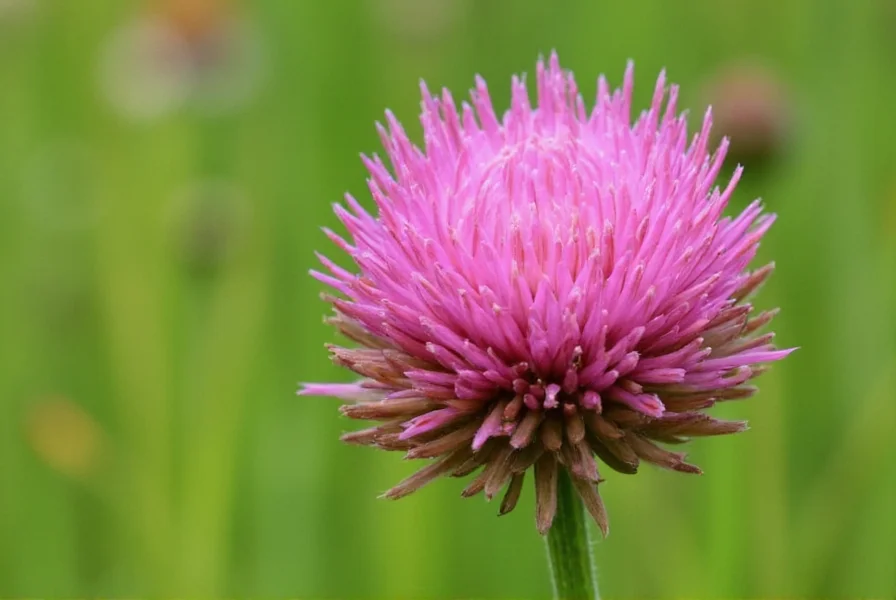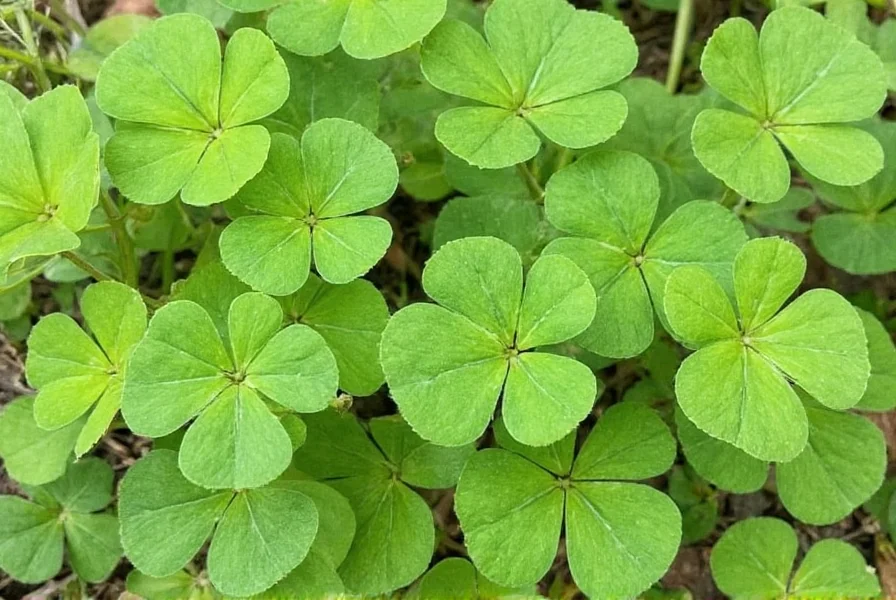Native to Europe, Western Asia, and northwest Africa, red clover has spread globally as both a valuable agricultural crop and medicinal herb. The plant's distinctive pinkish-purple flower heads contain isoflavones—plant compounds with estrogen-like properties—that form the basis of many of its studied health applications. Unlike synthetic hormones, these natural compounds interact selectively with estrogen receptors, potentially offering benefits with fewer risks.
Botanical Characteristics and Identification
Red clover (Trifolium pratense) grows 20-80 cm tall with hollow stems and trifoliate leaves featuring distinctive white V-shaped markings. The dense, spherical flower heads range from pink to purple and bloom from May through September in temperate climates. As a nitrogen-fixing plant, red clover improves soil quality, making it valuable in crop rotation systems. It's often confused with white clover (Trifolium repens), but can be distinguished by its taller growth habit and darker flower color.

Historical and Traditional Applications
For centuries, traditional medicine systems have utilized red clover for various purposes. Native American tribes used it as a dietary supplement and for skin conditions. European herbalists prescribed red clover preparations for respiratory ailments, while Russian folk medicine employed it for cancer treatment. Traditional Chinese Medicine incorporated red clover for detoxification and to support women's health during menopause. These historical uses have guided modern scientific investigation into its potential therapeutic applications.
Scientific Research on Health Benefits
Contemporary research has focused on several potential health benefits of red clover, with varying levels of evidence:
| Health Application | Research Status | Key Findings |
|---|---|---|
| Menopausal Symptoms | Strongest evidence | Multiple studies show significant reduction in hot flash frequency and severity compared to placebo |
| Cardiovascular Health | Moderate evidence | Potential improvement in arterial flexibility and lipid profiles in postmenopausal women |
| Bone Density | Preliminary evidence | Some studies suggest protective effects against bone loss in early menopause |
| Skin Health | Limited evidence | Topical applications show promise for psoriasis and other inflammatory skin conditions |
Active Compounds and Mechanisms of Action
The primary bioactive compounds in red clover are isoflavones, including genistein, daidzein, formononetin, and biochanin A. These phytoestrogens bind to estrogen receptors in the body, particularly the beta receptors, which may explain red clover's selective effects. Unlike hormone replacement therapy, red clover appears to have tissue-selective activity, potentially providing benefits in certain tissues while avoiding risks in others. The plant also contains coumarins, flavonoids, and salicylic acid derivatives that contribute to its overall biological activity.
Safety Profile and Potential Interactions
Red clover is generally well-tolerated when used appropriately, but important safety considerations exist:
- Contraindications: Not recommended for women with estrogen-sensitive conditions including breast cancer, ovarian cancer, or endometriosis
- Medication interactions: May interact with blood thinners, hormonal therapies, and certain cancer treatments
- Pregnancy and breastfeeding: Should be avoided due to potential hormonal effects
- Side effects: Mild gastrointestinal discomfort, headache, or muscle aches in some users
Consultation with a healthcare provider is essential before using red clover supplements, particularly for individuals with existing health conditions or those taking medications. The appropriate dosage varies depending on the specific preparation and intended use.
Practical Applications and Usage Guidelines
Red clover can be utilized in several forms:
- Tea: 1-2 teaspoons of dried flowers steeped in boiling water for 10-15 minutes (up to 3 cups daily)
- Tinctures: Typically 2-4 mL three times daily of a 1:5 strength preparation
- Capsules: Standardized extracts providing 40-80 mg of isoflavones daily
- Topical preparations: Creams or ointments for skin conditions
For best results when using red clover for menopausal symptoms, consistent use for 8-12 weeks is typically required before significant benefits are noticed. When harvesting wild red clover, ensure proper identification and avoid areas potentially contaminated with pesticides or pollutants.

Cultivation and Sustainable Harvesting
Red clover grows well in temperate climates with well-drained soil and moderate sunlight. It's relatively easy to cultivate in home gardens or as a cover crop. For medicinal use, flowers should be harvested when approximately 50% have opened, typically in mid-morning after dew has evaporated. Sustainable harvesting practices include leaving sufficient plants for pollinators and avoiding overharvesting from wild populations. Organic cultivation methods are recommended to prevent contamination with agricultural chemicals.
Conclusion
Red clover represents a fascinating intersection of traditional herbal knowledge and modern scientific investigation. While not a miracle cure, current evidence supports its potential benefits for managing menopausal symptoms and supporting cardiovascular health when used appropriately. As with any natural remedy, understanding both the potential benefits and limitations is crucial for safe and effective use. Future research may further clarify optimal applications and mechanisms of action for this versatile botanical.
What are the primary health benefits of red clover supported by scientific research?
The most well-supported benefit of red clover is its effectiveness in reducing menopausal symptoms, particularly hot flashes and night sweats. Multiple clinical studies have demonstrated that red clover isoflavones can significantly decrease both the frequency and severity of these symptoms compared to placebo. Emerging research also suggests potential cardiovascular benefits, including improved arterial flexibility and modest positive effects on lipid profiles in postmenopausal women.
How long does it take to see results from red clover for menopausal symptoms?
Most clinical studies indicate that it takes approximately 8-12 weeks of consistent daily use before significant improvements in menopausal symptoms become apparent. Some women report noticing subtle changes within 4 weeks, but maximum benefits typically require 2-3 months of regular supplementation. It's important to use standardized extracts providing 40-80 mg of isoflavones daily for optimal results.
Can red clover interact with common medications?
Yes, red clover can interact with several medications. It may enhance the effects of blood thinners like warfarin, increasing bleeding risk. It could potentially interfere with hormonal therapies including birth control pills and hormone replacement therapy. Red clover might also affect the metabolism of certain cancer medications. Individuals taking any prescription medications should consult with their healthcare provider before using red clover supplements.
Is red clover safe to use during pregnancy or breastfeeding?
No, red clover is not considered safe during pregnancy or breastfeeding. Due to its phytoestrogen content and potential hormonal effects, it's recommended that pregnant and breastfeeding women avoid red clover supplements. There is insufficient research on its safety in these populations, and theoretical concerns exist about potential effects on fetal development and infant health. Women who are pregnant, planning pregnancy, or breastfeeding should consult their healthcare provider before using any herbal supplements.
What's the difference between red clover and white clover for medicinal use?
While both are in the Trifolium genus, red clover (Trifolium pratense) contains significantly higher concentrations of the isoflavones that provide medicinal benefits, particularly for menopausal symptoms. Red clover flowers are darker pink to purple and grow on taller stems compared to white clover's lower-growing habit and white flowers. Most scientific research on menopausal benefits has focused specifically on red clover, making it the preferred choice for this application. White clover contains lower levels of the active compounds and has not been studied as extensively for human health applications.











 浙公网安备
33010002000092号
浙公网安备
33010002000092号 浙B2-20120091-4
浙B2-20120091-4